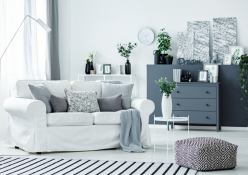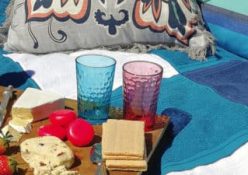The smallest changes often make the most difference, so why not start looking at one of the biggest elements in your home – the walls!
What makes a paint eco-friendly?
The concept of being eco-conscious has been around for a long time, even if just as a faint idea in the back of our minds while going about our everyday lives. Today, however, the pressure is on for everything to be as green, eco-friendly and sustainable as possible if we stand any chance of preserving our precious Earth.
That said, you still want your paint job, on whatever surface it may be, to be durable with a consistent colour pay-off. Luckily, there are quality paints out there that
will deliver just that, without sacrificing the environment in the process. Opt for a paint that does not contain any of the following:
• Fresh-paint headache-inducing airborne chemicals or gasses, otherwise known as volatile organic compounds (VOCs). These include components such as benzene, acetone, formaldehyde, polycyclic aromatic hydrocarbons, toluene and xylene.
• Solvents, which usually act as a carrier for the resins and pigments, and then ultimately evaporate as the paint starts to dry.
• Lead, which has a number of harmful effects on the body.
What to look for
There are loads of options and alternatives to regular paints, and although not as prominent locally, they do exist. Generally, paint is classified under solvent- and water-based, with solvent-based paints containing between 30% to 70% VOCs by weight, and water-based paints containing a much lower amount of approximately 6%.
With water-based paint being the obvious better choice, we can go even further and look for paints that are milk protein powder-, mineral-, or plant-based. These are generally completely free of VOCs, have a low material wastage, have a greater breathing surface for faster drying, and are biodegradable. They do, however, tend to be on the pricier side, require more effort and labour, can be susceptible to fungal growth, and rougher to the touch, but create a much healthier environment for us all in the long run.
Read more in your October issue of Livingspace.







